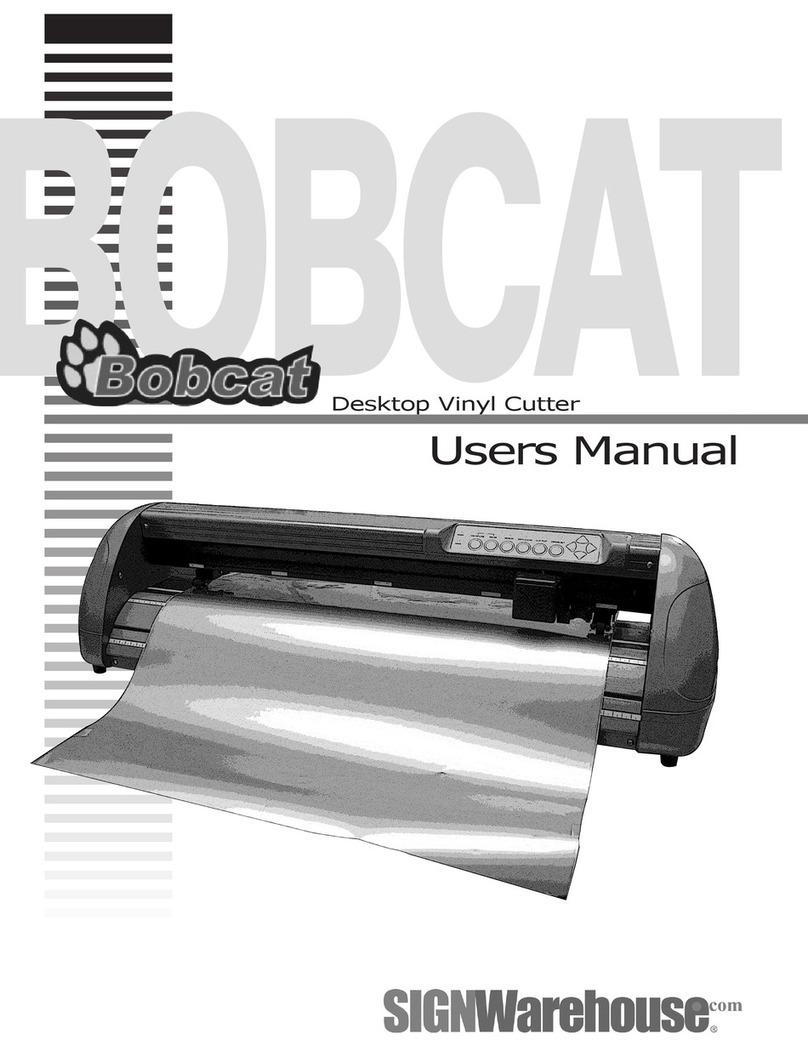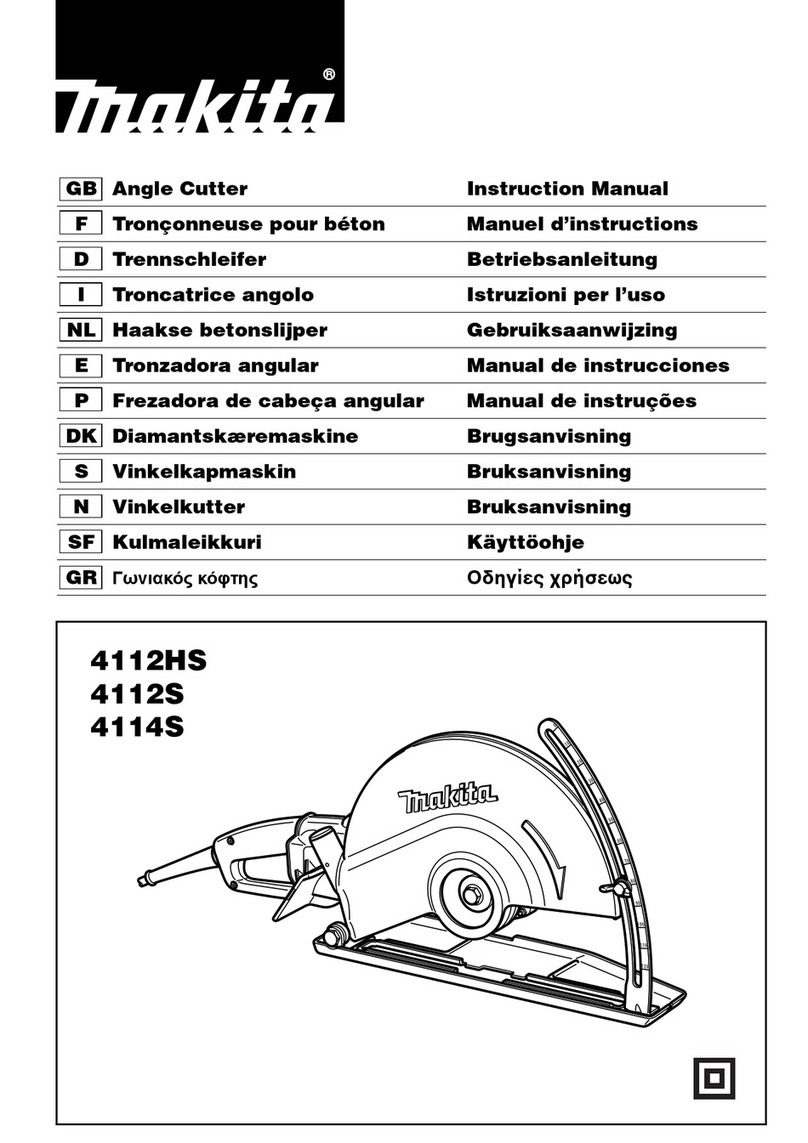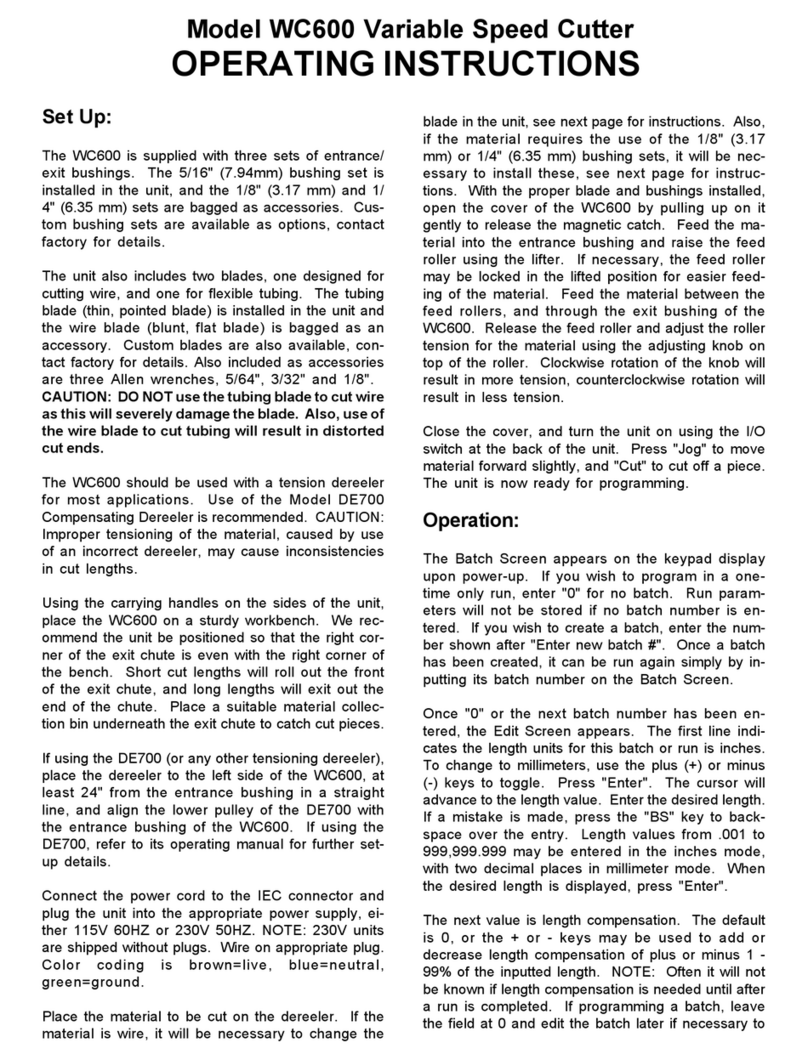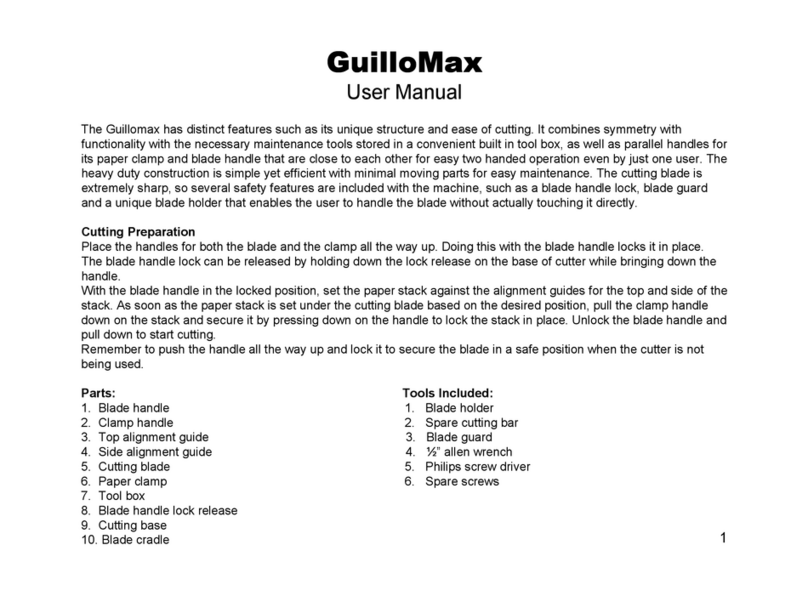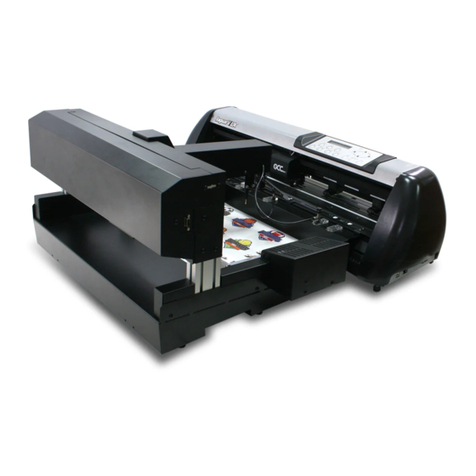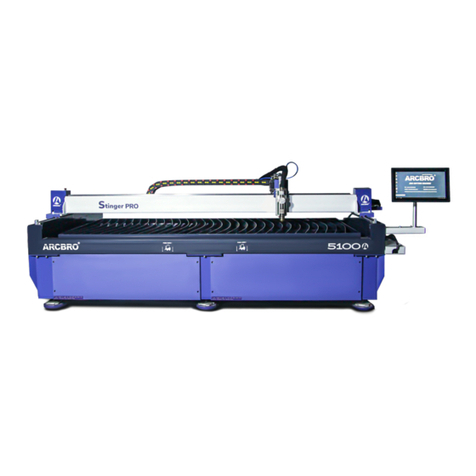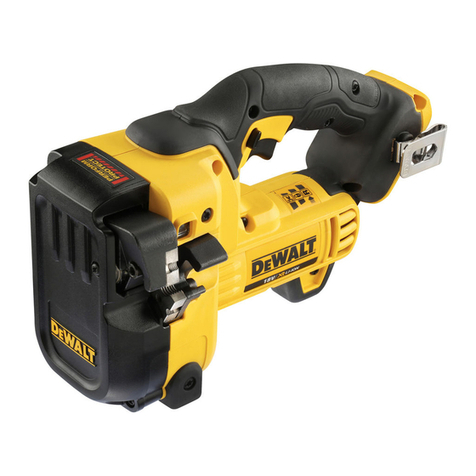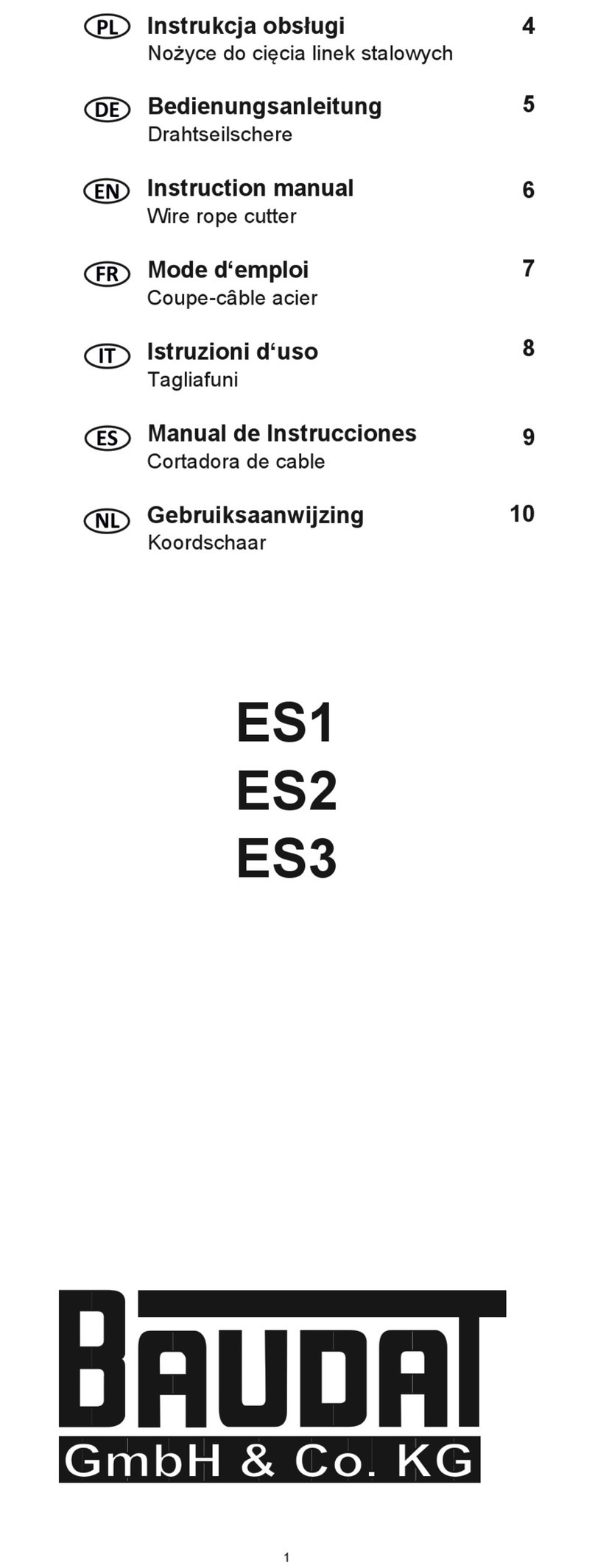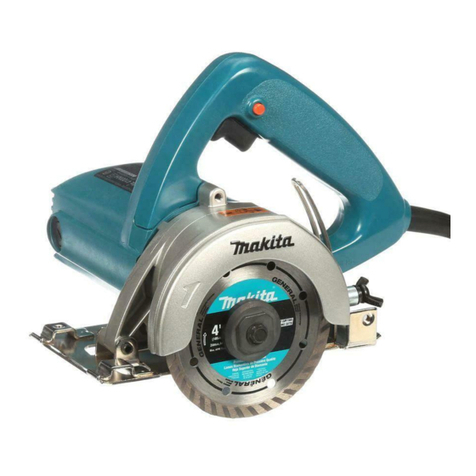
8
out of the sphere of influence of the rotating
tool and operate the power tool for a minute
at the highest revolutions. Damaged tools will
usually break within this test period.
• Wear personal safety gear. Depending on the
work you are doing, wear a full-face visor,
visor or protective goggles. If appropriate,
wear a dust mask, ear defenders, protective
gloves or a special apron designed to keep
sanding and material particles away from
you. Your eyes should be protected from the fly-
ing objects that may be generated during various
applications. Dust or breathing masks must be
capable of filtering the dust generated during
operation. If you are expose to loud noise for
extended periods, you may suffer a loss of hear-
ing.
• Ensure that other people are kept a safe dis-
tance from your workplace. Anyone entering
the workplace must wear personal protective
gear. Pieces of the workpiece or broken tools
may fly away and cause injuries even outside the
direct workplace.
• Hold the tool by the insulated handle surfaces
only when you are carrying out tasks during
which is it possible that the tools will come
across hidden power cables or its own cable.
Contact with a power-carrying cable can also
put metal parts of the unit under power and
cause an electric shock.
• Keep the power cable away from rotating
tools. If you loose control of the unit, the power
cable may be cut or caught up and your hand or
arm may be pulled into the rotating tool.
• Clean the ventilation slots of your power tool
regularly. The motor fans draw dust into the
housing and a large deposit of metal dust can
cause electrical hazards.
• Never use power tool near flammable materi-
als. Sparks may set fire to these materials.
• Never bring your hands into the cutting area
when the power tool is running. Contact with
the cutting disc holds a risk of serious injury.
• Never reach behind the cutting disc to hold
the work piece or to remove chips. The dis-
tance between your hand and the operating cut-
ting disc is too small.
• Only guide the work piece as far as the oper-
ating cutting disc. Otherwise there is a risk of
kickback when the cutting disc becomes
jammed in the entering work piece.
• Use the power tool only when the work sur-
face is free from all setting tools, workpiece
parts etc. Objects the come into contact with
the rotating cutting disc may hit the operator at
a high speed.
• Always cut one workpiece at a time. Work
pieces the are stacked or stacked against each
other may block the cutting disc or slide about
when cutting.
• Long work pieces must be supported at the
free end. Freely swinging work piece ends may
cause loss of control.
• Always use a parallel stopper. This improves
the accuracy of the cut and reduces the possibil-
ity of a jammed cutting disc.
• If the cutting disc is jammed or you need to
interrupt your work, switch off the device and
hold it motionless until the disc has come to
a standstill. Never attempt to pull a still oper-
ating cutting disc out of the cut as this may
cause kickback. Investigate and take correc-
tive actions to eliminate the cause of the jam.
• Do not switch the power tool back on as long
as it remains stuck in the work piece. Allow
the cutting disc to achieve the full revolutions
before you continue to cut carefully. Other-
wise, the disc may get caught, jump out of the
work piece or cause kickback.
• After switching off the unit, do not attempt to
stop the cutting disc by applying pressure
from the side. Touching the cutting disc may
lead to injuries.
• Use the electric tool always with the enclosed
earth fault circuit interrupter (FI switch).
Check the function of the FI switch before
every use. The FI switch does not protect
against direct touching of electric conductor.
• Never use the electric tool without cooling
water. Check the cooling water level before
every use. A dry run can cause failure of the tool
and thus lead to injuries.
• Do not pull the mains plug if this or the outlet
is wet. First turn off the current by taking out of
the fuse and/or with the circuit breaker of the
respective circuit. Pull first the plug and then test
the extension for possible water traces.
• Empty the cooling water container every
transport. Rest cooling water can penetrate into
the electrical motor parts.
Additional safety notes
• Store the unused power tool safely in a dry
place that can be locked. This ensures that the
power tool is not damaged as a result of storage
and the inexperienced persons do not operate it.
• Never leave the power tool before it has come
to a completed standstill. Tools that continue
to operate may cause injury.
• Never use the power tool with a damaged
cable. Do not touch a damaged cable and pull
out the power plug. Damaged cables increase
the risk of electric shock.
• Prevent overheating of the device and the
work piece. Excess heat may damage the tool
and the device.
• Shortly after being used, the tool may be very
hot. Allow a hot tool to cool down. Touching
a hot tool may cause burns.
• Never clean a hot tool with flammable liq-
uids. There is a risk of fire and explosion.
• Wear ear defenders when working. The
effects of noise can result in a loss of hearing.
• Keep the handles dry and free of grease.
Slippery handles can lead to accidents.
• Always comply with the all applicable domes-
tic and international safety, health, and work-
ing regulations. Inform yourself before you start
work about the regulations that apply at the site
of the device.
• Note that the moving parts can also be fitted
behind ventilation openings.
GB
temp.book Seite 8 Dienstag, 5. April 2016 8:13 08

